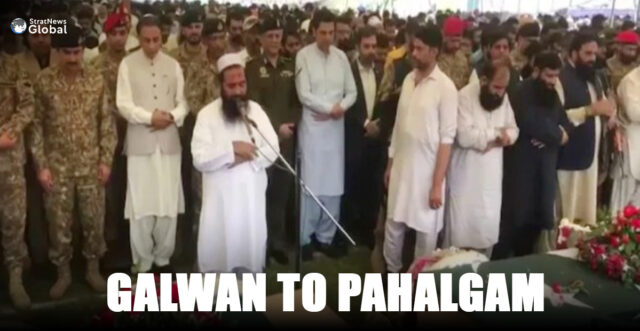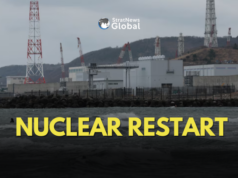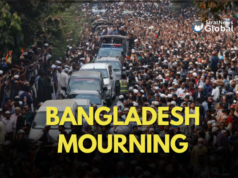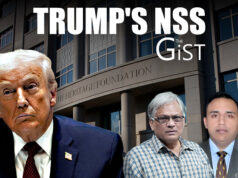When Chinese troops ambushed Indian soldiers in the Galwan Valley in June 2020, the world held its breath—and then, more or less, held its tongue.
Twenty Indian soldiers were killed in brutal hand-to-hand combat, and while China’s casualties were never officially confirmed, satellite imagery and intelligence leaks suggested significant losses on both sides.
The response from the international community?
A collective shrug wrapped in diplomatic euphemisms. “We urge restraint,” said Western capitals. “We are monitoring the situation closely,” murmured multilateral institutions. If any red lines were crossed, the global order kept its pens capped.
Fast forward to 22 April, 2025. In Pahalgam, Kashmir, 26 tourists were gunned down in a horrific terrorist attack by Pakistan-based militants.
India retaliated through a tri-pronged offensive: diplomatically (suspending the Indus Waters Treaty), politically (isolating Pakistan on the world stage, kicking some Pakistani diplomats out, and increasing efforts to bring the revisionist nation on the Financial Action Task Force (FATF) Grey List ), and militarily (launching Operation Sindoor, a limited but precise campaign targeting terror infrastructure in Pakistan and PoK).
This time, the international reaction was swift—and far louder. But while many condemned the attack and expressed support for India’s actions, some voices in the Western media and institutions fretted about “regional escalation” and “India’s muscular approach.”
The contrast between these two responses offers a revealing window into how global perceptions of India have changed—or haven’t.
- Tone and Messaging: A Shift in Global Language
In 2020, the global tone post-Galwan was conspicuously cautious. China was in the midst of a delicate phase, still reeling from the pandemic’s early economic toll yet too big to antagonise. Governments “encouraged dialogue,” media outlets parsed satellite images instead of parsing motives, and multilateral institutions hedged their statements. China’s salami-slicing of territory along the Line of Actual Control (LAC) was seen as a “border dispute” rather than a violation of sovereign norms.
Compare that to 2025. In the wake of the Pahalgam massacre, major powers—especially the United States, France, and Japan—issued unambiguous condemnations of terrorism. India’s retaliatory actions were largely viewed as legitimate self-defence. The language of response had matured from neutrality to normative clarity.
Even the usually fence-sitting G7 and the UN issued statements backing India’s right to defend its citizens, though still cautioning against escalation. This is a marked departure from the Galwan episode, where they largely stayed away from naming or blaming China.
- Western Governments and Double Standards
One of the starkest revelations of this comparison is how differently Western governments view Chinese aggression versus Indian assertiveness. In Galwan, there was no equivalent of the outrage one saw post-Pahalgam. Why?
Simple: China controls the world’s supply chains. India, while important, doesn’t control the global trade bloodstream. This economic leverage skews foreign policy responses. Even when China unilaterally alters the LAC, it’s “strategic.” When India responds to mass civilian casualties, it’s “muscular.”
Yet, 2025 also signals a shift. The U.S. response—while still calibrated—was firmer, with multiple senators and think tanks noting that “India cannot be expected to absorb terrorist attacks in silence.” Europe, too, showed signs of aligning its rhetoric with reality. India’s global lobbying efforts post-Pahalgam—through multi-party delegations dispatched to key capitals—seem to have helped frame the narrative better than in 2020.
- The Role of Media: Nuance vs. Narrative
Western media coverage of Galwan in 2020 was dominated by satellite analysis, geopolitical speculation, and cautious reporting. The question of who was the aggressor was left dangling, often deliberately, to avoid antagonising Beijing.
By contrast, media coverage post-Pahalgam has been more vocal, albeit split. Outlets like The Guardian and Washington Post raised concerns about India’s airstrikes, while others like The Times (UK) and Le Figaro backed India’s right to act against terror havens.
The difference lies partly in India’s improved media engagement. Indian journalists and diplomats have been far more proactive in framing the 2025 conflict in human terms—the image of bloodied pilgrims and devastated families—not just as another India-Pakistan flare-up.
- Multilateral Bodies: From Silence to Statements
Post-Galwan, the United Nations was, predictably, vague. China’s permanent seat on the Security Council ensured that any resolution, even a symbolic one, was off the table. The Shanghai Cooperation Organisation (SCO), where both India and China are members, remained diplomatically neutered.
The Organisation of Islamic Cooperation (OIC), meanwhile, predictably toed the Pakistani line, offering boilerplate condemnations of India without acknowledging terrorism.
Post-Pahalgam, the same institutions behaved somewhat differently. The UN Secretary-General issued a pointed condemnation of terrorism and expressed “solidarity with the victims.” The OIC, however, continued its Pakistan-first stance—drawing sharp rebuttals from Indian Muslim civil society groups who accused it of “abetting selective amnesia.”
Interestingly, the SCO saw rare behind-the-scenes tensions, with Russia and Central Asian states privately expressing concern over Pakistan’s role in fostering instability, even if official statements remained guarded.
- Public Opinion and Diaspora Mobilisation
After Galwan, Indian diaspora groups staged scattered protests across Western capitals. But their efforts were largely overshadowed by broader pandemic anxieties and the global economic slump.
In contrast, Pahalgam 2025 has seen a surge of grassroots activism. Indian diaspora groups in the U.S., UK, Australia, and Canada organized marches, launched digital campaigns, and flooded international media with op-eds and fact-checks.
In cities like New York and London, demonstrators carried signs reading: “Terrorism is not diplomacy” and “Pakistan must be held accountable.” The global Indian voice has grown more sophisticated, more coordinated, and less apologetic.
- Strategic Implications: India’s Growing Assertiveness
Perhaps the most significant takeaway from this contrast is the evolution of Indian strategy.
After Galwan, India fortified its positions, moved troops to higher terrain, and imposed a “no business as usual” policy until Chinese disengagement occurred—however limited. It also quietly diversified supply chains away from China and began recalibrating its strategic posture.
Post-Pahalgam, India moved swiftly on all fronts: diplomatically with the Indus Waters Treaty suspension, militarily with precision strikes, and psychologically by naming and shaming Pakistan at every global forum.
India is no longer trying to win sympathy. It is trying to define the rules of engagement—on its own terms.
The Galwan and Pahalgam episodes bookend a half-decade of tectonic shifts in geopolitics. If Galwan showed how much India stood alone, Pahalgam shows how far it has come in forcing the world to listen. More importantly, it shows that while global powers may prefer cautious neutrality, India no longer asks for permission.
But the double standards remain. China is still viewed through the lens of pragmatism, while India is often judged through the prism of risk. What’s changing, however, is that India is beginning to write its own narrative—and the world is finally starting to read it.
Meanwhile, India has shown that it is willing—and able—to walk alone.
In a career spanning three decades and counting, Ramananda (Ram to his friends) has been the foreign editor of The Telegraph, Outlook Magazine and the New Indian Express. He helped set up rediff.com’s editorial operations in San Jose and New York, helmed sify.com, and was the founder editor of India.com.
His work has featured in national and international publications like the Al Jazeera Centre for Studies, Global Times and Ashahi Shimbun. But his one constant over all these years, he says, has been the attempt to understand rising India’s place in the world.
He can rustle up a mean salad, his oil-less pepper chicken is to die for, and all it takes is some beer and rhythm and blues to rock his soul.
Talk to him about foreign and strategic affairs, media, South Asia, China, and of course India.





